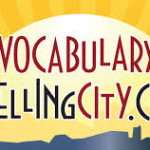Digital Citizens
In today’s world most everyone has some access to the Internet. Even my 14 month old grandson was immediately drawn to his granddad’s iPad the other day and somehow he knew how to turn it off and on. By watching his older brother he also knew that somehow if he swiped his fingers across the screen something would happen. What he doesn’t know; however, is how to safely navigate the net. He doesn’t know how to use the net and of course he doesn’t know how to keep himself safe. Not much different from my 13 year old niece and even my 20 year old son.
While the Internet is becoming more and more part of our daily lives, being safe users means understanding what is appropriate. Navigating the digital world safely and ethically as well as responsibly and legally is part of the growing definition widely acceptable as becoming a digitally good citizen.
Check out Kristen Mattson’s Ethics is a Digital World: Guiding Student’s through Society’s Biggest Questions. We are an Amazon affiliate and may make a commission upon your purchase with the following link.















